
views
Making Basic Mittens

Make your pattern. Place your hand onto a sheet of paper. Keep your fingers together and your thumb sticking out at an angle. Trace around your hand, leaving a 1-inch (1.27-centimeter) space around it. Don't make the base too narrow, or you will have troubles slipping the mitten on and off. Cut the pattern out when you are done. Use regular scissors to cut the pattern, not your fabric scissors. You are adding the extra space for wiggle room and seam allowance. Keep your lines and curves smooth. You don't have to make the little bumps for the fingers. Think: basic mitten shape.
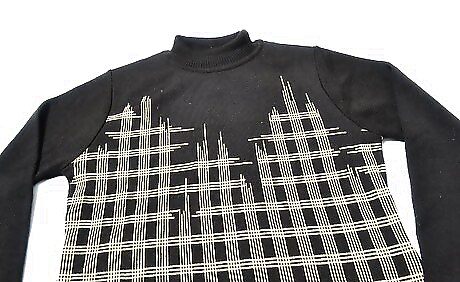
Felt a wool sweater. Place the sweater into a pillowcase. Wash it in the washing machine using hot water. Dry it in the dryer using a high temperature. Repeat this 3 to 4 times for best results. This will felt the wool, making it cozier and easier to work with. The sweater will shrink. Don't worry, this is fine. Choose a sweater that is at least 80 percent wool; 100 percent would be even better.
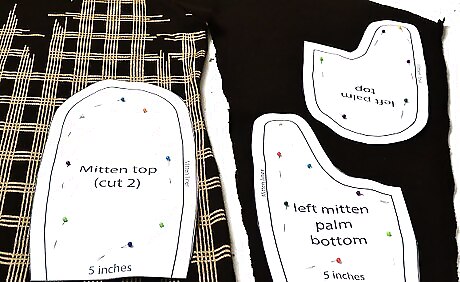
Pin your pattern to the sweater. Align the bottom, palm part of your pattern with the top edge of the ribbed hem. The ribbed hem will make a cuff around your wrists. This will make it easier to tuck your mittens into your coat while you are wearing them, and lock in the warmth.
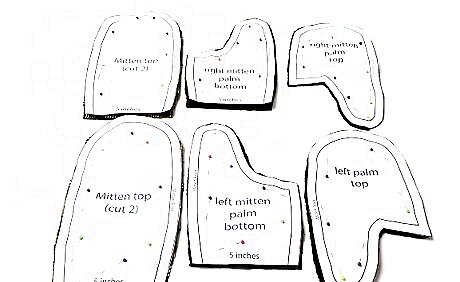
Cut the pattern out using a pair of fabric scissors. When you are done, flip the pattern over, pin it in place, then cut out the other mitten. This will give you a left and right mitten. When you are done, you should have four pieces.
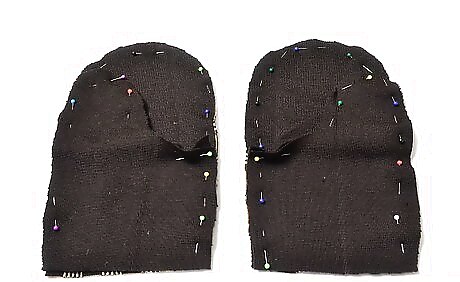
Pin the mitten pieces together. Flip the mitten pieces over. Pin them together with the right sides facing in and the wrong sides are facing out. You do not have to pin across the bottom edge.
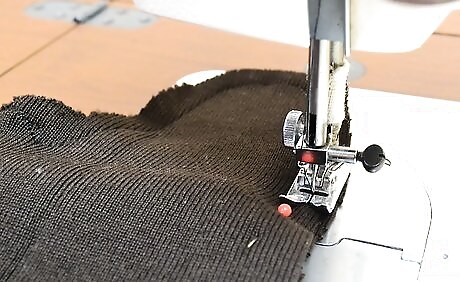
Sew around your mitten using a ½-inch (1.27-centimeter) seam allowance. Use a small zigzag stitch and follow the lines that you drew. This will allow the fabric to stretch without snapping the thread. Backstitch a few times at the start and end of your sewing. Do not sew across the bottom edge.
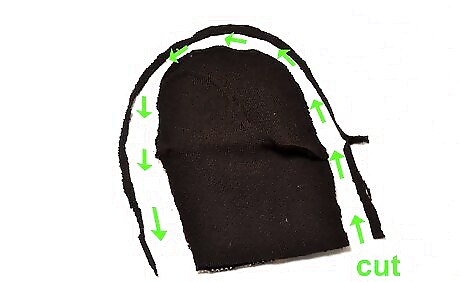
Trim the seams down to ⅛ to ¼-inch (0.32 to 0.64-centimeter). This will help reduce bulk and make the mittens more comfortable to wear. If you'd like, you can go over the edges with a small zigzag stitch.
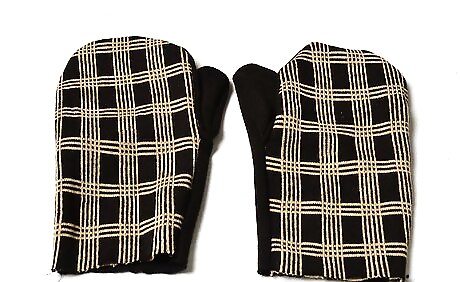
Turn the mitten inside out. Tuck your hand into it and wiggle your fingers. This will help push out the seams and fill it out.
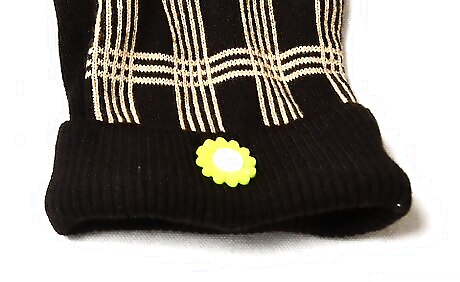
Decorate the mitten, if desired. You can decorate it with embroidery thread and buttons. Here are some ideas to get your started: Use embroidery thread in a contrasting color to make a blanket stitch around the bottom hem of your mitten. Keep the stitches loose, or your mitten won't stretch. Add simple embroidery to the top/front of each mitten. Braid some yarn, then weave it around the wrist of your mitten to make a tie cord. Attach a matching pompom to each end of the cord. Fold the cuff over to shorten it, then sew a wood or plastic button on top.
Adding a Lining (Optional)
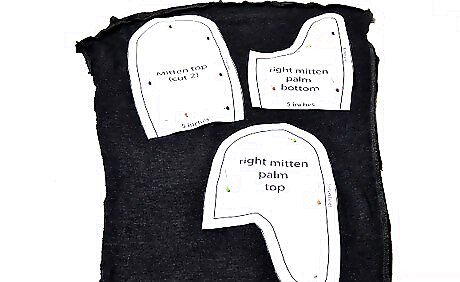
Pin your pattern to your lining fabric of choice. Fold your lining in half. Pin the pattern ½ inch (1.27 centimeters) away from the bottom edge of your lining. The lining will stop at the wrist. You are adding the extra ½ inch (1.27 centimeters) for the hem. Great lining choices include: flannel, fleece, and jersey/t-shirt fabric. You can buy it from the fabric store, or reuse old shirts or blankets.
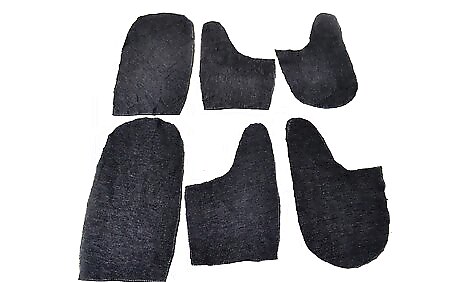
Cut the lining out. When you are done, flip the pattern over, and cut out another set of lining pieces. You should have four pieces when you are done.
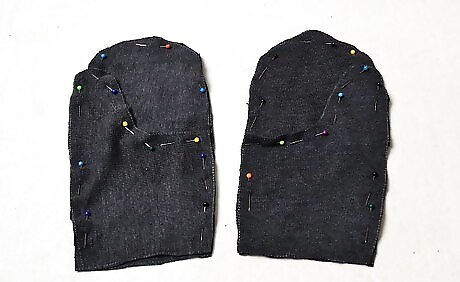
Pin the mitten pieces together. Make sure that you are pinning the mittens with the right sides facing in and the wrong sides facing out.
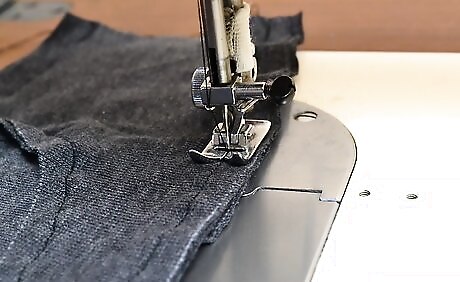
Sew the mittens together using a ½-inch (1.27-centimeter) seam allowance. Use a simple straight stitch for this. Be sure to backstitch at the start and end of your sewing and to remove the pins as you sew. Do not sew across the bottom of the mittens. If you are using jersey or t-shirt material, use a small zigzag stitch instead.
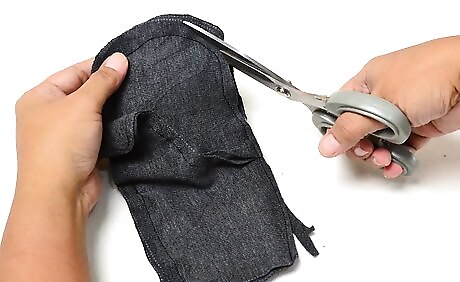
Trim the hems down. Try to get them down to about ⅛ to ¼ inch (0.32 to 0.64 centimeter). This will help reduce bulk and make your mitten more comfortable to wear. For a neater finish, go back over the edges with a small zigzag stitch.
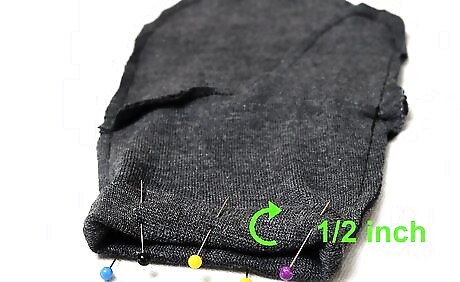
Fold and pin the bottom hems. Fold the bottom edges up by ½ inch (1.27 centimeters) all the way around each mitten lining. Pin them in place.
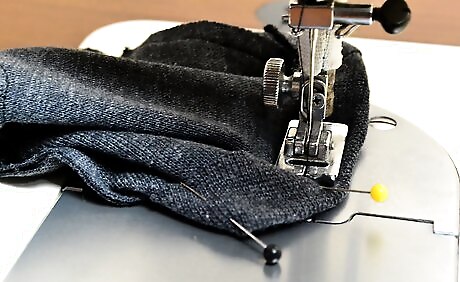
Sew the hems, ⅛ to ¼-inch (0.32 to 0.64-centimeter) away from the raw edge. Use a simple straight stitch if you are using flannel or fleece, and a small zigzag stitch if you are using jersey or t-shirt material. If you wish to add an elastic, do the following: Leave a ½-inch (1.27-centimeter) gap in the hem. Thread a piece of elastic through the gap with a safety pin. Pull the elastic until the hem gathers slightly. Cut the excess elastic, then stitch the ends together. Tuck them into the gap. Sew the gap shut.

Turn your mittens back inside out. Do not turn your lining inside out. This way, your lining will be smooth on the inside. The raw hems will be covered by the mittens.
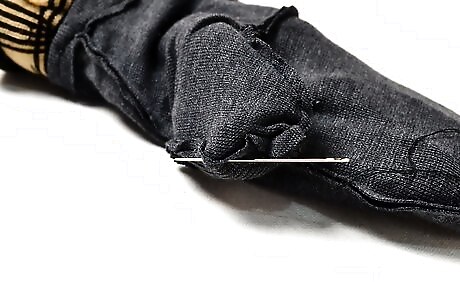
Hand stitch the thumb and fingers of the two pieces together. Set your lining down on the table with the matching mitten piece across from it, hems overlapping. Stitch the two thumbs together at the hems. Stitch the two finger pieces together at the top center, also at the hems. This will help keep the lining in place when you pull the gloves off. Repeat this step for the other mitten and lining piece.

Turn the mitten inside out. Tuck your hand into the lining. Roll the mitten over your hand, like a sock. Adjust it until the seams match up and the fit is comfortable.
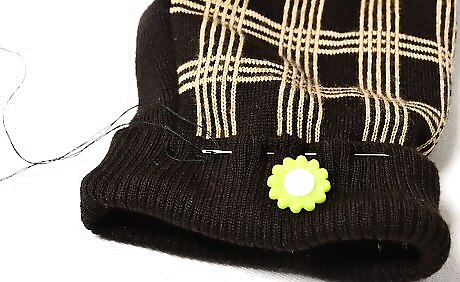
Stitch the hem to the mitten using a small zigzag stitch. If you added an elastic to the hem, keep the elastic pulled taut while you sew and use a larger zigzag stitch. Alternatively, you can stitch it by hand with a loose running stitch
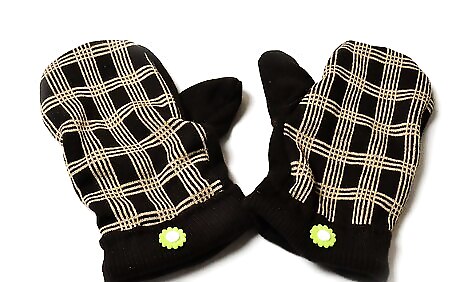
Finished.



















Comments
0 comment